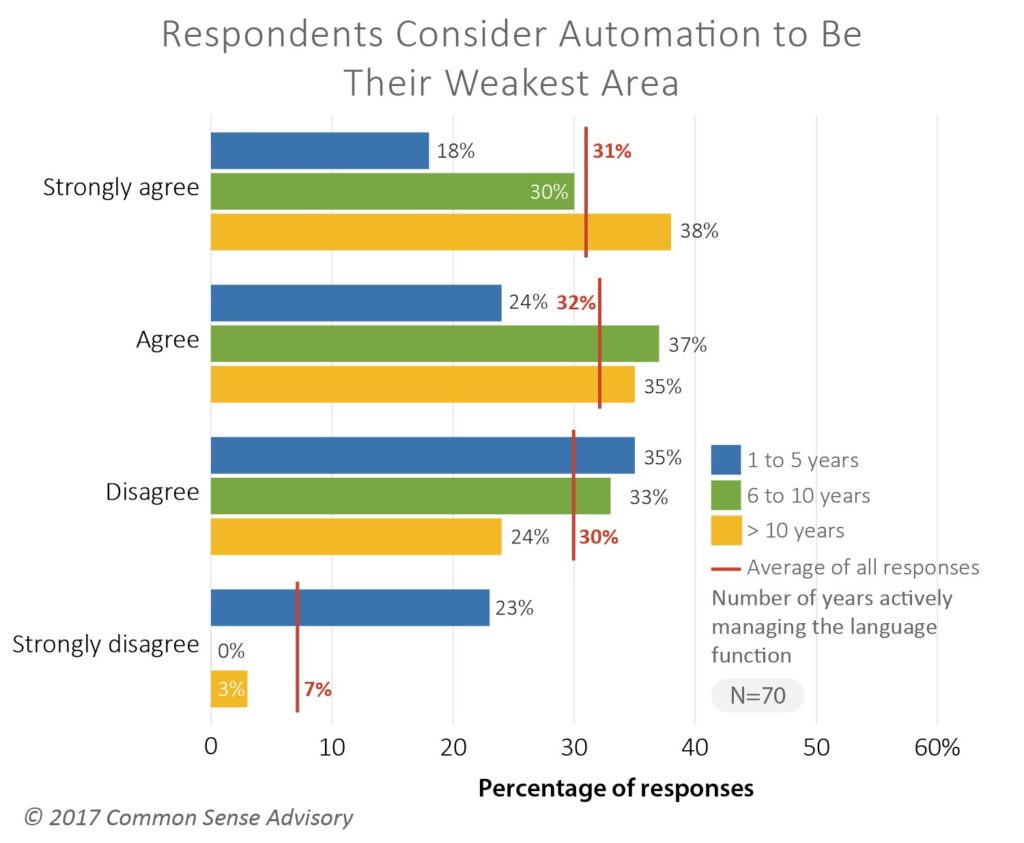In a Race, Efficiency and Process Automation Wins

Project management. Automation. At first glance, these aren’t the most exciting terms in the industry. Spreadsheets, status reports, and workflows probably come to mind. But, behind every great translation services company is an all-star project translation management team, powered by an incredibly efficient translation management software system (TMS).
Here’s why: the industry has become more competitive than ever. Since 2009, market size has doubled from $23.5 billion to $46.5 billion in 2018 — and it’s still growing. And, the number of language service providers (LSPs) is rising in accordance with the market — from freelance translators, to small and large translation agencies.
According to a 2018 industry report, “In some cases, the competition in a specific market is quite consistent, year over year, as it is with translation.” (1) 95% of providers in the translation industry offer translation services. And, 65% of them derive more than half of their revenue from these services (1). As global markets and the need for translated content continues to expand, we expect even more companies will jump into an already saturated, highly competitive industry.
When the Stakes are High, How can a Translation Company Win?
The answer is automation. LSPs must become more efficient and productive. Otherwise, they won’t stand out among the competition. When a company can deliver outstanding translation services, but do so in a streamlined, flawless manner, they’ll quickly become a preferred vendor for global companies. And, they’ll have more time to win business.
Jobs are Getting Smaller and more Frequent
Machine translation technology now allows LSPs to take on smaller projects more frequently. On a day-to-day basis, companies might see more requests for 1,000 word projects each day, versus large projects with 20,000 words. But taking on smaller projects more frequently means more project management work.
That’s why, in 2019, we predict more companies will seek automation services within translation management systems (TMS). A TMS allows companies to use translation memory (to handle language repetition) and a collection of terms to quickly translate content. A TMS can also automate processes and increase efficiency of work.
For example, a translator imports a file into a TMS for translation. Then, the TMS runs an analysis showing the number of new words that aren’t in the translation memory and the amount of repetition in the content. This helps a project manager quickly create an accurate quote for a client. A TMS can also run a QA analysis on a finished project — just at the click of a button. And, there are many more examples of how a TMS can automate workflows. In fact, a translation company can often define as many workflows as they want, making every step easier and faster.
Certain Administrative Tasks are a “must” for Automation
Even though companies can design all types of workflows, we’ve found they hone in on certain administrative tasks over others. According to our experience (which lines up with a recent study published in Common Sense Advisory (3)), companies most want to automate:
- Financial-related tasks: integrating with accounting software, auto-generating purchase orders, calculating vendor budgets, and employee time-tracking
- File-related tasks: an auto-download of project packages, ability to process more than one language at a time, translation notarization
- Client-related tasks: client reminders, quote generation, integrated client reviews, progress reports, follow-up reminders
- Vendor-related tasks: auto-assigning linguists, project dashboards and management, vendor rating, feedback collection, automatic phone dial of vendors
- Translation memory tasks: file preparation and formatting, automatic translation memory analysis, cleanup, and updates
Even the most Experienced LSPs aren’t Fully Taking Advantage of Automation technology
Language service providers (LSPs) who implement automation can take on more jobs, more quickly — and become more profitable. But, many companies still aren’t fully adopting automated processes. According to a 2017 study, the majority of established LSPs only have partially automated their processes (2). But, in our opinion, it simply isn’t enough to just automate the quoting process. It’s important for LSPs to automate the entire process, from when they receive a job to delivery.
According to the same survey, 38% of respondents with more than 10 years of industry experience believe automation is their weakest area (2). On one hand, it’s good news that experienced LSPs recognize their dire need for automation in a highly competitive (and growing) market. On the other hand, we wonder what is holding them back from fully embracing this technology.
Regardless, we know there’s a major trend in the need for automation, as well as a growing, more cutthroat market. The companies, despite their experience and strategy, that will win in 2019 are the ones who heavily invest in automation and a TMS.
We may see a major shift next year in which LSPs dominate the market — depending on their decision to invest in automation. Only time will tell.

References:
1 “The Language Services Market: 2018.” June 2018.
2 “Automation: Implementing Technology within Limits.” Rebecca Ray and Donald A. DePalma. February 2017.
3 “What Project Managers Wish Technology Did for Them.” Hélène Pielmeier and Vijayalaxmi Hegde. July 30, 2013.


